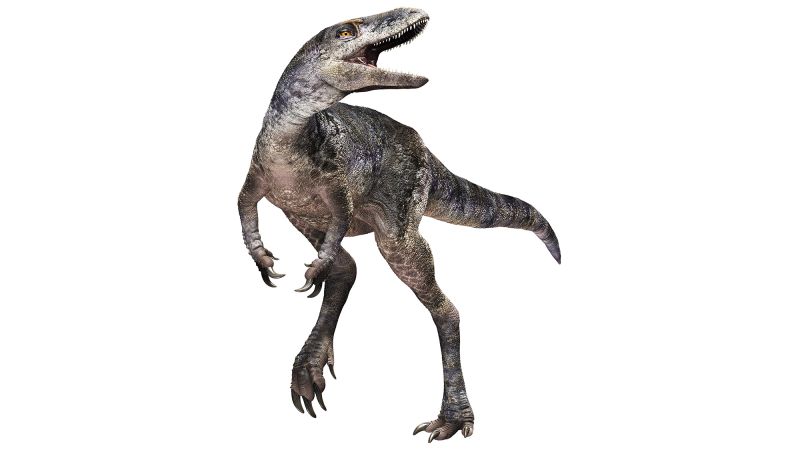Recent paleontological discoveries have shed light on the evolution of tyrannosaurs, revealing previously unknown species and their roles in the dinosaur lineage. A remarkable finding out of Mongolia has identified an 86 million-year-old dinosaur species named Khankhuuluu mongoliensis, which translates to “dragon prince of Mongolia.” This newly classified species adds a crucial piece to the puzzle of how tyrannosaurs evolved from smaller ancestors into the massive apex predators known today, such as Tyrannosaurus rex.
Researchers, utilizing two partial skeletons uncovered in the Gobi Desert in the early 1970s, have established Khankhuuluu as the closest known ancestor to later tyrannosaurs. In the journal Nature, the team explained that this discovery not only unveils a new species but also necessitates a reevaluation of the tyrannosaur family tree. As Darla Zelenitsky, a co-author of the study and associate professor at the University of Calgary, noted, the identification of Khankhuuluu has led to a rewriting of the family history, alleviating previous confusion regarding the relationships among tyrannosaur species.
Tyrannosaurs, or Eutyrannosaurians as they are scientifically known, evoke images of colossal dinosaurs like T. rex and Tarbosaurus. These creatures, some weighing several tons, had a formidable build characterized by short arms and massive heads, allowing them to effectively hunt and dominate their environments. However, the evolution of tyrannosaurs was not linear; they originated from smaller species and gradually grew in size throughout the late Cretaceous Period, flourishing from approximately 85 million to 66 million years ago.
In stark contrast to their more massive relatives, Khankhuuluu mongoliensis was relatively petite, weighing around 750 kilograms (approximately 1,653 pounds) and measuring 2 meters (6.5 feet) at the hips with a length of 4 meters (13 feet). To understand the sheer size difference, Zelenitsky compared them to horses next to elephants, noting that Khankhuuluu would have only reached the thigh of a T. rex. Moreover, distinct differences in bone structure, such as a hollow snout compared to the solid structure of T. rex, further classify Khankhuuluu as a transitional species rather than a true tyrannosaur.
The migration patterns of these newly identified ornithological creatures indicate significant evolutionary processes occurring between Asia and North America during the Cretaceous. Zelenitsky speculated that Khankhuuluu mongoliensis and closely related species ingressed from Asia to North America using a land bridge that once connected Alaska to Siberia. Through this migratory event, tyrannosaurs diversified, ultimately leading to their ability to evolve into much larger forms.
Another intriguing aspect of the research indicates that two distinct subgroups further evolved in Asia after migrating back from North America, leading to varieties such as the bulky, deep-snouted species and the smaller, more slender Alioramins. The term “Pinocchio rexes” has been coined to describe these smaller dinosaurs due to their elongated, shallow snouts. This differentiation among dinosaurs allowed them to coexist without competition for resources, as larger species occupied the apex predator role while smaller ones targeted lesser prey.
In addition to elucidating the evolution of tyrannosaurs, the study opens new questions regarding the transitions of species across landmasses and their adaptive strategies. Paleontologist Cassius Morrison highlighted how the finding of Khankhuuluu provides critical insight into an otherwise murky part of the tyrannosaur family tree, emphasizing the pivotal role migrations played in their successful evolution.
The study also reflects the current state of paleontological research, wherein reliance on previously stored fossil specimens is imperative for understanding evolutionary changes. Steve Brusatte, a leading paleontology scholar, noted the importance of Khankhuuluu mongoliensis fossils given their age—20 million years pre-T. rex—underlining the rarity and significance of such specimens. This research attests that historical specimens can yield groundbreaking insights, enhancing our understanding of evolutionary pathways.
The contributions of Khankhuuluu mongoliensis and research into its anatomy illustrate the labyrinthine history of tyrannosaurs and highlight how migration and adaptive evolution shaped their ascendance as apex predators. As scientists continue to unravel the complexities of the fossil record, the story of tyrannosaurs becomes increasingly rich and nuanced, revealing the dynamic interplay of environment, migration, and adaptation that characterized their evolutionary journey.



